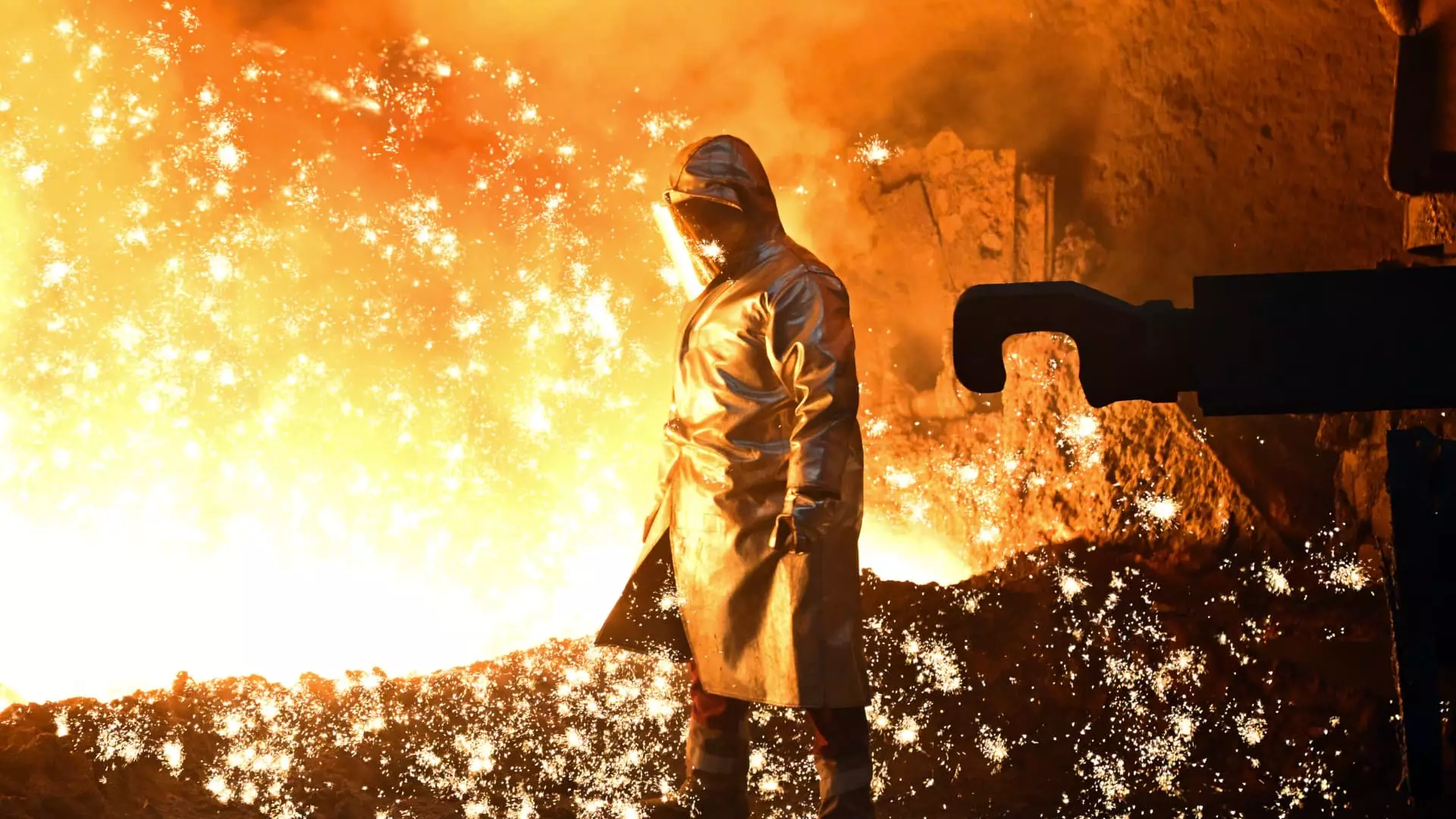In a strategic move that has stirred both concern and anticipation, U.S. President Donald Trump announced plans for new 25% tariffs aimed at imports of steel and aluminum. This decision, expected to be formalized soon, adds another layer to a complex scenario of trade negotiations and policies that affect domestic and international markets alike. Given that steel and aluminum are fundamental to many industries, ranging from construction to transportation and packaging, the implications of this tariff could resonate significantly across various sectors.
One of the most evident beneficiaries of these tariffs may be American steel and aluminum manufacturers, who might see a resurgence in demand for their products. Over the past several years, U.S. steel imports have been on a downward trajectory, plummeting by 35% between 2014 and 2024, reflecting a shift in focus towards domestic production stimulated by earlier tariffs from Trump’s first term. According to James Campbell, a commodities analyst at CRU, the potential tariffs could initially constrain demand but might ultimately lead to increased investment in the domestic market over time.
For industries reliant on these metals, such as automotive and construction, the tariffs could create opportunities for localized sourcing, potentially reducing reliance on foreign imports. Notably, companies like Thyssenkrupp, a leading European steel manufacturer, have expressed confidence in their U.S. operations, suggesting that their niche products and significant local manufacturing could weather any adverse effects stemming from new tariffs.
Conversely, the imposition of these tariffs could deal a substantial blow to countries that heavily export steel and aluminum to the United States. Nations like Canada, Mexico, South Korea, and Germany, which are major players in these markets, might face severe repercussions. In particular, the tariffs could diminish their competitiveness in the U.S. market, leading to a drop in export volumes. Canadian steel and aluminum manufacturers, previously insulated from tariffs, find themselves in a precarious position, despite earlier exemptions.
Reports have indicated that Germany’s steel exports to the U.S. could shrink as prices might increase due to the increased costs of importing metals. However, Thyssenkrupp has downplayed the potential fallout, indicating that their focus on high-quality products tailored for the U.S. market might shield them from the full brunt of the new tariffs.
The consequences of the proposed tariffs extend beyond immediate trade relations, leading to questions about long-term market dynamics. An ambitious tariff implementation might lead to short-term supply disruptions, but with time, the market could adjust, potentially fostering an environment conducive to domestic investment. As highlighted by Campbell, historical trends from previous tariff implementations suggest that U.S. manufacturers could ramp up production to meet newly created demand.
On the flip side, a sudden spike in tariffs might not only restrict imports but could also lead to price inflation for steel and aluminum domestically, creating challenges for U.S. manufacturers who rely on these materials for production. In such scenarios, small and midsize enterprises could face disproportionate risks, as larger corporations might better absorb increased costs, thereby exacerbating competitive inequalities.
The announcement of new tariffs on steel and aluminum by Trump underscores a pivotal moment in U.S. trade policy with far-reaching implications for both the domestic and global economy. While domestic producers may stand to gain in the medium to long term, the immediate effects on international relations and market operations could be disruptive. Countries like Canada, Mexico, Germany, South Korea, and Vietnam may experience detrimental impacts, raising questions about market stability and international cooperation.
As this dynamic continues to unfold, stakeholders across various sectors will need to navigate the intricate landscape of tariffs, trade relationships, and market forces to capitalize on opportunities while mitigating risks. The outcome of these tariffs remains uncertain, and with such significant stakes involved, it will be crucial for policymakers and industry leaders to proceed with both caution and foresight.


Leave a Reply